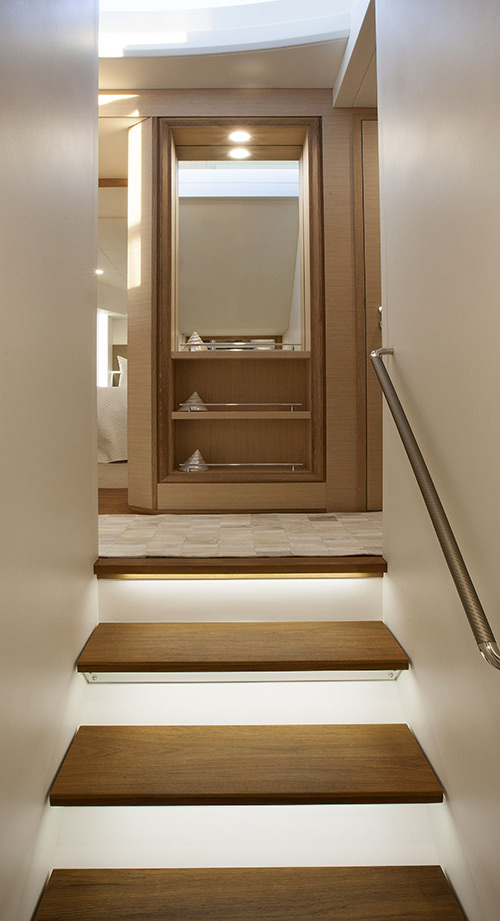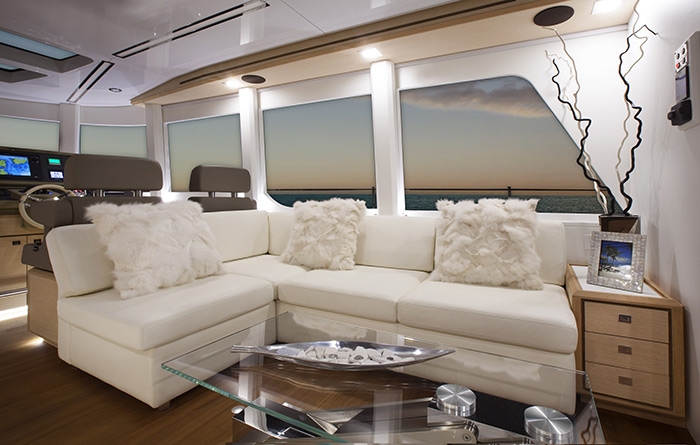|
Articles
24 Oct 2013 Interview with Scott Moyse (SMI Group) on yachts interior design and PLM 360: Anytime and Anywhere, but still not for Anyone

Oleg Shilovitsky (Autodesk, PLM 360 vendor) on the left, and Scott Moyse (SMI Group, PLM 360 customer) on the right. Autodesk University Russia 2013 at Moscow.
Could you describe the process of yacht interior design and manufacturing? At which stage of yacht designing do you start to design interior (furniture, etc.)?
Traditionally, and it's still the case now for the most part, the owner engages the shipyard or project management company to start the interior design and to make a commissioning and build. At the end of this stage they have a general arrangement plan and the styling or finishes they want for the boat. Often the shipyard has already created the exterior, styling and structure, that’s certainly the case if it’s based on one of the shipyards standard hull designs. What happens then, they can design something or come up with the ideas that would not necessarily work with a finished structure of a boat of which they don't think about - the shape, restrictions and structure.
In a perfect world the design of the interiors would happen earlier in the process and the structure has been designed to accommodate request or desire of the interior designer earlier on in the process. For the most part we end up with a situation when everything has been designed, interior design is finished, styling is finished, the general arrangement is set, we then save this information, and we have to figure out how to make it fit inside of the structure. And at this point we really may find problems like couches sticking out of the hull. So we end up taking all of this information of engineering and interior to fit together and go back and communicating with shipyard and interior designer to make changes to fit some of the structure. In the end the ñenter piece of the Yacht, its interior and associated support systems, have been compromised and the project isn’t as good as it could have been. Is it possible, that during the process of interior design you suggest your customer to modify the design of yacht (for the sake of better overall design)? If so, how is the cooperation with yacht designers organized (3D/2D data transfer and so on)?
The project NISI 1700 we completed at the beginning of this year, had the best collaboration in the design process we’ve experienced yet. This project was a combination of the efforts between the shipyard NISI Yachts based in China and the naval architect Ward Setzer based in the US and of course Specialist Marine Interiors based in New Zealand. They were really open to making sure that we got as much stuff modelled in 3D as possible, in order to tie the design together.
This relationship then developed with the design of an industry changing 15m catamaran (NISI Xpresso 1500) developed across the same team. There was a lot of collaboration across continents in the form of 3d model collaboration, before we arrived to the final conceptual but manufacturable design, with optimization of all the conditions that possible. This initial process took the best part of 6 months and we took steps to really make sure that we design everything before we actually start manufacturing or building interior.
Having seen the finished product, I have to say NISI 1700 is the best looking NISI yet. I just live the subtle styling and those stairs are just magic.

What CAD software do you use? What software do your partners use?
So for the most part naval architects which we work with use Rhinoceros, and some specialized programs such as Maxsurf to develop an efficient and high performance hulls. And we use Autodesk Product Design Suite and Factory Design Suits to develop our parametric models of the interior and visualisations. Then of course we use Autodesk Vault to manage all the data in the design office. AlphaCAM Advanced Router is used to program all of the components for our CNC machine
Autodesk PLM 360 is a platform that initially was made to be cloud-based. Why do you choose this platform instead of traditional solutions?
We are New Zealand based company and we operate internationally and have international clients. We also have staff, which are situated in different locations and different time zones around the world. So the cloud technology for communication and web storage of information means that our remote employees and the clients can get access to that information 24/7. So, the collaboration is its real strength. SMI’s implementation of PLM 360 has been hampered by a need to focus on winning new work to guarantee the company’s survival but also a need for the concept to be embraced by the entire workforce as a methodology in the same way as ‘Lean Manufacturing’.
It’s interesting because ‘Lean’ is often shunned by the workforce, based on the perception it will ultimately cost them their jobs. PLM doesn’t have that stigma, but resistance comes from those who don’t understand it, or have an aversion to using computers. NISI Yachts has been extremely forward thinking with regards to their adoption of technology to solve problems associated with the products lifecycle. So that has been extremely refreshing for SMI.

Now, when you use Autodesk PLM 360 for some reasonable time, do you agree with the slogan, that is applied for cloud-based solutions: "Anyone, Anytime, Anywhere"?
"Anytime, Anywhere", - I agree with. "Anyone", - no, I don't. There are a lot of people in the world who don't like to use technology or resist change. So "anyone" is a bit of a stretch here. There has to be a willingness to learn or to change. There is still the issue of requiring offline modes to support the use of the product in areas where accessing the internet is either impossible or impractical. So in that sense ‘Anywhere’ is also a debatable claim, but that is changing quickly.
Could you compare Autodesk Vault and Autodesk PLM 360?
We see their place on a current tools sets as: Vault is used in the design office, by the engineering team, and PLM is about providing information pre-design for sales guys, CAD admin and management, and by far its largest use case is post-design. So they are made for the similar things, there’s certainly a lot of cross over but essentially they have 2 distinctively different uses.
Thank you for the interview!
See also:
Permanent link :: http://isicad.net/articles.php?article_num=16501

|